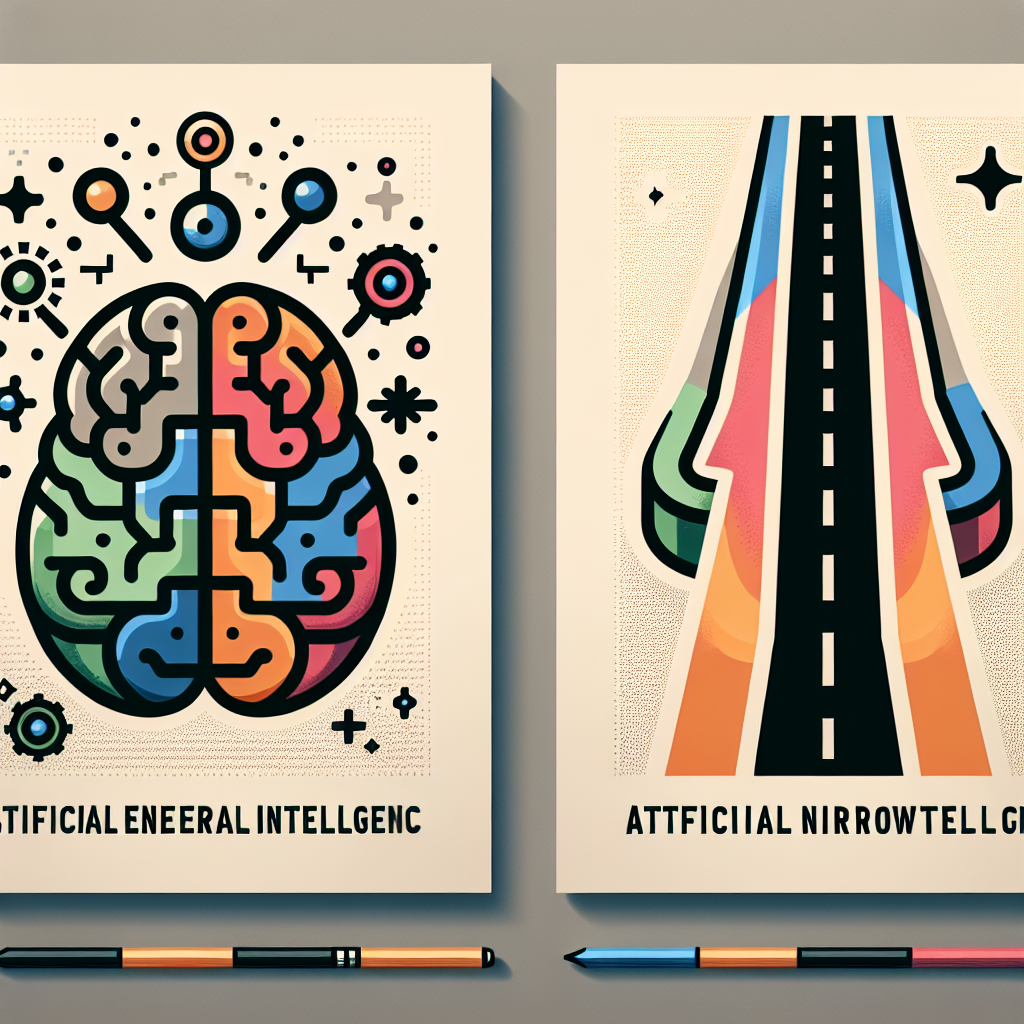Introduction
Artificial intelligence (AI) has become an integral part of our daily lives, from virtual assistants like Siri and Alexa to self-driving cars and personalized recommendations on streaming services. However, there are different levels of AI, ranging from Artificial Narrow Intelligence (ANI) to Artificial General Intelligence (AGI). In this article, we will explore the differences between AGI and ANI, their capabilities, and the implications for society.
Artificial Narrow Intelligence (ANI)
Artificial Narrow Intelligence, also known as Weak AI, refers to AI systems that are designed for specific tasks or functions. ANI is specialized in one area and cannot perform tasks outside of its programmed capabilities. Examples of ANI include speech recognition, image recognition, and recommendation systems.
ANI is limited in its ability to adapt and learn new tasks. It operates within predefined parameters and cannot generalize its knowledge to different domains. ANI is designed to perform a specific task efficiently, but it lacks the flexibility and creativity of human intelligence.
ANI is commonly used in various industries, such as healthcare, finance, and marketing. For example, ANI algorithms are used in medical imaging to detect abnormalities in X-rays and MRIs. In finance, ANI is used for fraud detection and risk assessment. In marketing, ANI is used for personalized recommendations and targeted advertising.
Artificial General Intelligence (AGI)
Artificial General Intelligence, also known as Strong AI, refers to AI systems that have the ability to understand and learn any intellectual task that a human being can. AGI is designed to mimic human intelligence and perform a wide range of cognitive tasks. AGI has the ability to adapt to new situations, learn from experience, and solve complex problems.
AGI has the potential to surpass human intelligence in terms of creativity, reasoning, and problem-solving abilities. AGI can understand natural language, recognize patterns, and make decisions based on incomplete information. AGI has the capacity to think abstractly, learn from mistakes, and improve its performance over time.
AGI has the potential to revolutionize various industries, such as healthcare, education, and transportation. For example, AGI algorithms can be used to diagnose diseases, develop personalized learning plans for students, and optimize traffic flow in urban areas. AGI has the potential to drive innovation and create new opportunities for economic growth.
Differences between AGI and ANI
The main difference between AGI and ANI lies in their capabilities and limitations. ANI is designed for specific tasks and operates within predefined parameters, while AGI is designed to mimic human intelligence and perform a wide range of cognitive tasks. AGI has the potential to surpass human intelligence in terms of creativity, reasoning, and problem-solving abilities.
Another key difference between AGI and ANI is their level of adaptability and learning capabilities. ANI is limited in its ability to adapt to new situations and learn new tasks. It operates within predefined parameters and cannot generalize its knowledge to different domains. AGI, on the other hand, has the ability to adapt to new situations, learn from experience, and solve complex problems.
Implications for Society
The development of AGI has the potential to have a profound impact on society. AGI has the potential to drive innovation, create new opportunities for economic growth, and improve the quality of life for individuals. However, there are also potential risks and challenges associated with the development of AGI.
One of the main concerns surrounding AGI is the potential for job displacement. As AGI becomes more advanced and capable of performing a wide range of cognitive tasks, there is a risk that many jobs could be automated, leading to high levels of unemployment. It is important for policymakers and industry leaders to address these challenges and develop strategies to mitigate the impact of job displacement.
Another concern surrounding AGI is the potential for misuse and unintended consequences. AGI has the potential to be used for malicious purposes, such as hacking, surveillance, and warfare. It is important for researchers and developers to prioritize ethical considerations and ensure that AGI is developed and deployed responsibly.
FAQs
Q: What are the key differences between AGI and ANI?
A: The main differences between AGI and ANI lie in their capabilities and limitations. ANI is designed for specific tasks and operates within predefined parameters, while AGI is designed to mimic human intelligence and perform a wide range of cognitive tasks.
Q: What are some examples of ANI applications?
A: Examples of ANI applications include speech recognition, image recognition, and recommendation systems. ANI is commonly used in various industries, such as healthcare, finance, and marketing.
Q: What are some examples of AGI applications?
A: Examples of AGI applications include healthcare diagnostics, personalized learning, and autonomous vehicles. AGI has the potential to revolutionize various industries and drive innovation.
Q: What are the potential risks and challenges associated with the development of AGI?
A: Some of the potential risks and challenges associated with the development of AGI include job displacement, misuse, and unintended consequences. It is important for researchers and developers to prioritize ethical considerations and ensure that AGI is developed and deployed responsibly.
Conclusion
In conclusion, AGI and ANI represent two different levels of artificial intelligence, each with its own capabilities and limitations. ANI is designed for specific tasks and operates within predefined parameters, while AGI is designed to mimic human intelligence and perform a wide range of cognitive tasks. AGI has the potential to revolutionize various industries and drive innovation, but there are also potential risks and challenges associated with its development. It is important for researchers, policymakers, and industry leaders to address these challenges and ensure that AGI is developed and deployed responsibly.

